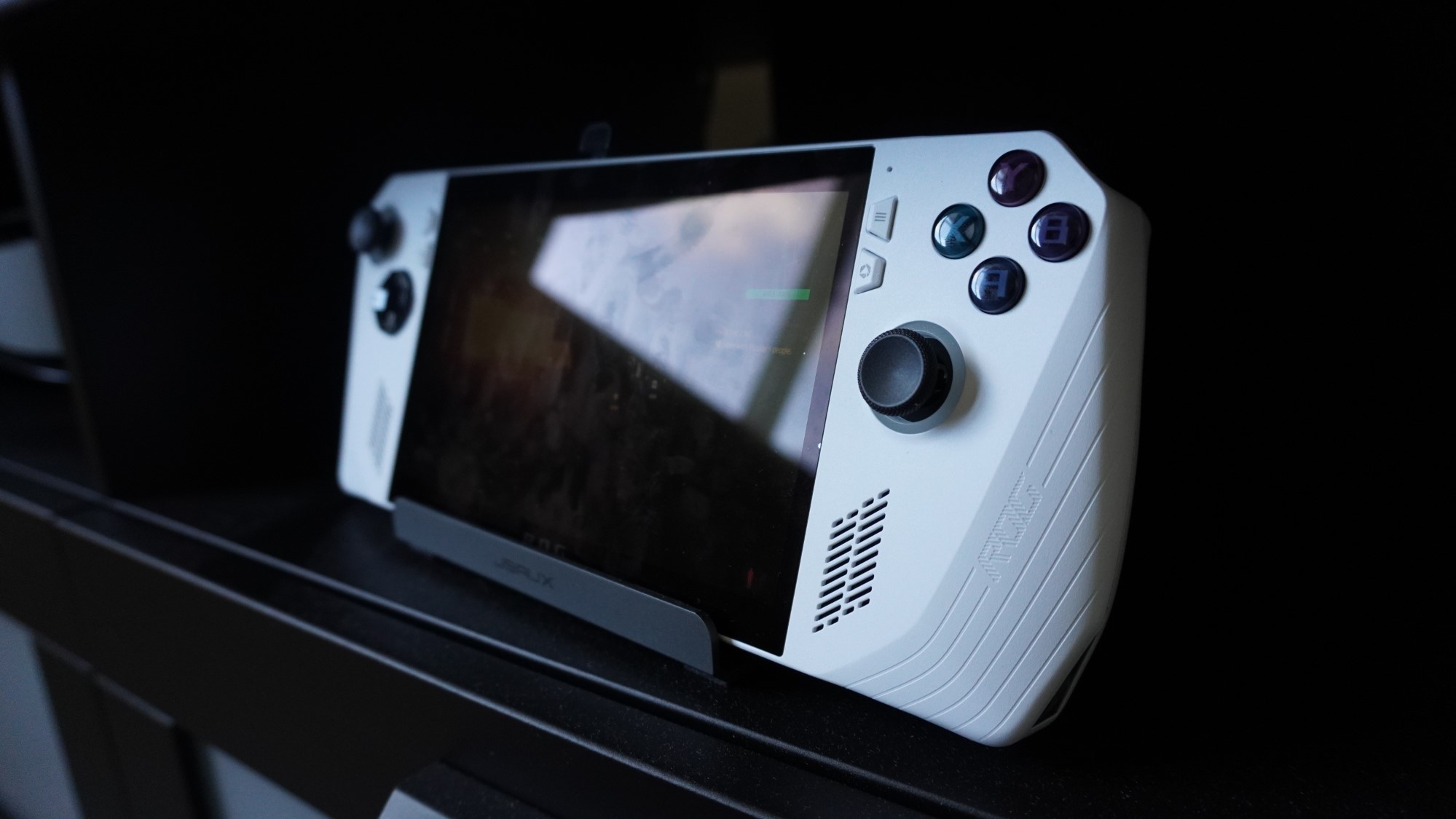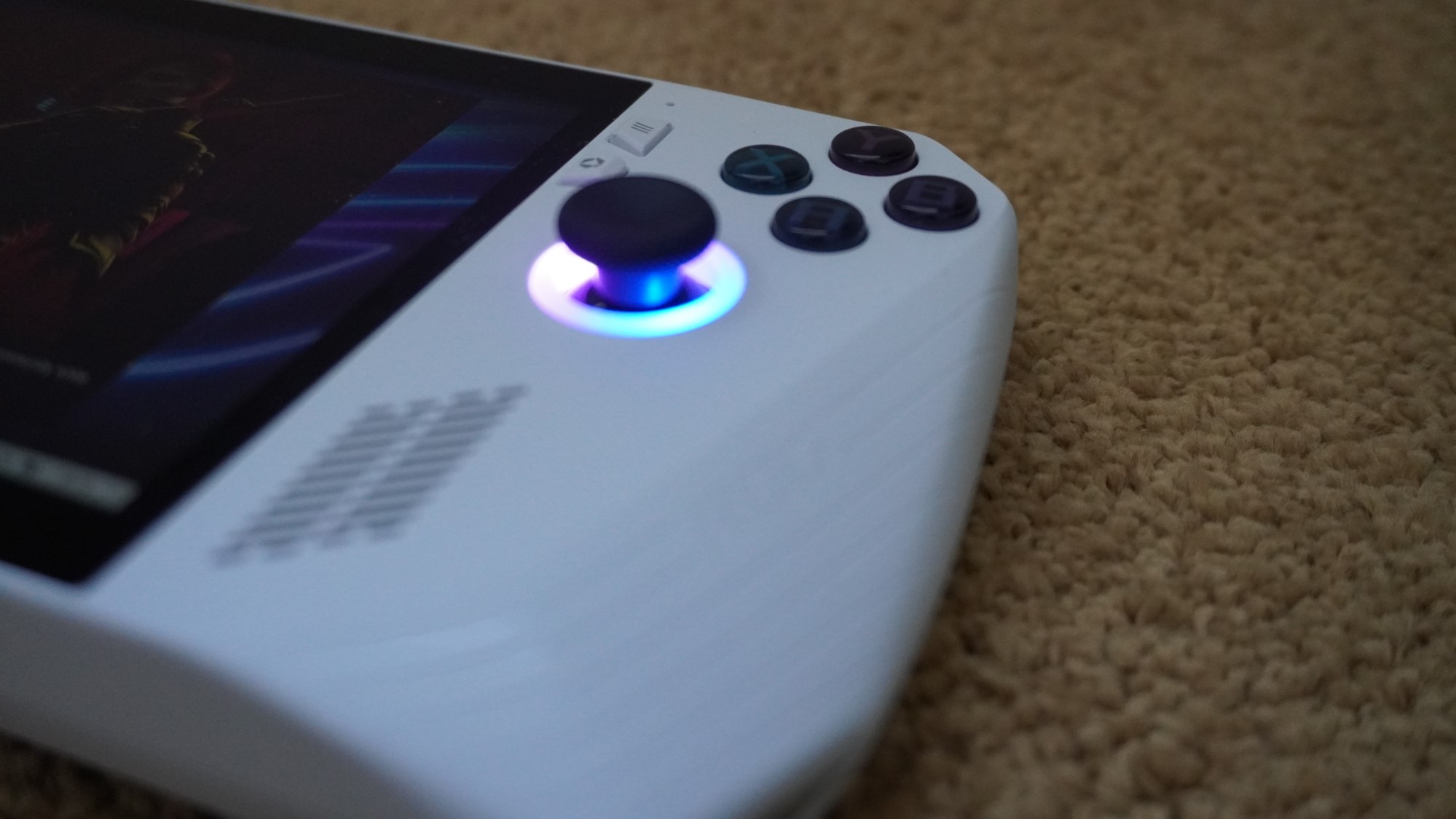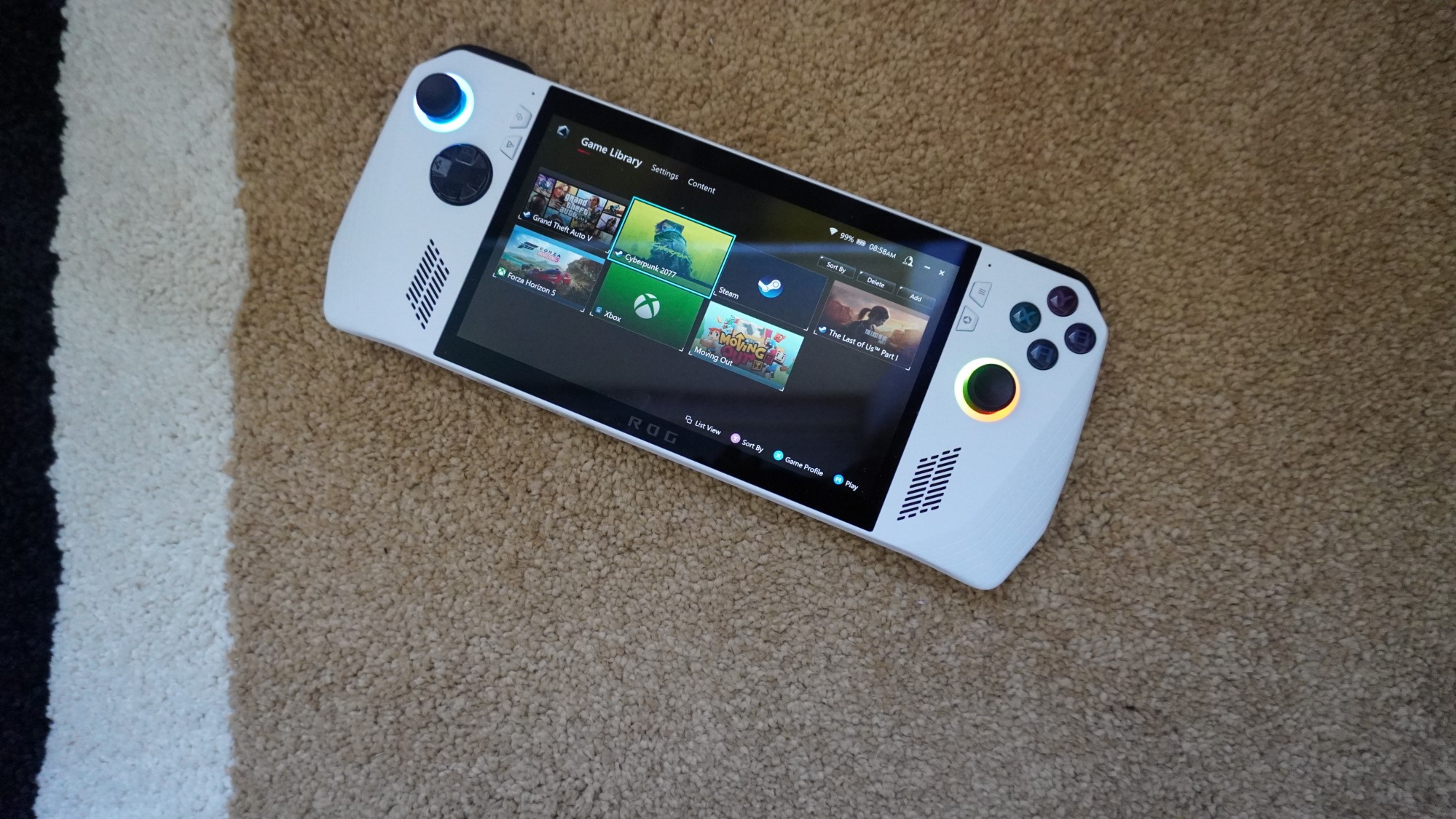Asus ROG Ally revisited — it’s a lot better now
My alliance with the Steam Deck may fall in the face of the Ally

When we reviewed the Asus ROG Ally last month, we liked it but didn’t necessarily love it as the Steam Deck killer we were hoping for, but it still made our best handheld gaming devices page. Given there was a brand spanking new AMD Ryzen Z1 Extreme chipset in here, we didn’t get the performance we expected.
Fast forward one month (and a ton of updates) later, the ROG Ally has really come into its own as the dominant gaming handheld. Not only have there been some handy quality of life features and a ton of bug fixes, but we’re seeing some huge improvements in game performance – the kind of speed bumps we were expecting over Valve's handheld.
So, let’s answer the ultimate questions. What’s changed? Is the Ally now worth that $700/£700 price tag? And more importantly, in the face of a cheaper Steam Deck (that will only get cheaper with regular discounts), is it worth that additional cost?
Bug fixes galore

One key thing we saw throughout our time were a series of bugs. Silly things that suggested that the version of Armory Crate on here was kind of half finished.
Asus has been rolling out a lot of updates to tackle the worst of them. These fixes include:
Are there still some small frustrations? Sure. The frames per second limiter is inconsistent across games, Armory Crate still has no option to adjust analog stick sensitivity, and in some titles (Hitman 3 most prominently for me), button inputs to change the Ally’s quick settings will register as a simultaneous button press in-game too.
But this is encouraging progress, and a big step in the right direction. Tackling the big issues has made the whole experience a lot smoother.
Sign up to receive The Snapshot, a free special dispatch from Laptop Mag, in your inbox.
Big performance gains

One thing that alarmed me while reading our first review of the ROG Ally is that the supposed gains in performance over the Steam Deck were not a reality. We were promised big improvements, but in reality, it was only a difference of a few frames per second.
Asus has extracted more power and speed from that AMD Ryzen Z1 Extreme processor, and it translates into noticeably smoother gameplay that makes that price tag more worthwhile. It begins with a small gain on the CPU processing side.
| Header Cell - Column 0 | Single-core | Multi-core |
|---|---|---|
| Asus ROG Ally (June) | 2096 | 11542 |
| Asus ROG Ally (May) | 1933 | 10614 |
| Steam Deck | n/a | 3579 |
The difference in app snappiness is not really that apparent with a small increase like this. But of course, chances are most of you won’t use this for anything other than gaming, so let’s cut to the chase.
| 3D Mark Benchmark | Asus ROG Ally (June) | Asus ROG Ally (May) |
|---|---|---|
| Fire Strike | 7312 | 7980 |
| Time Spy | 3150 | 3556 |
We’re seeing a roughly 10% jump in 3D Mark performance here. That’s quite the jump to say it’s only been a month of updates. However, the real big improvements come when you actually play some games, and I must be honest, some of the numbers are jaw dropping.
| Game Benchmark | Asus ROG Ally (June) | Asus ROG Ally (May) | Steam Deck |
|---|---|---|---|
| Cyberpunk 2077 (1080p Ultra) | 35.6 FPS | 21.99 FPS | n/a |
| Cyberpunk 2077 (1080p Steam Deck) | 36.94 FPS | 24.6 FPS | 30 FPS |
| DiRT 5 (1080p Ultra High) | 32.1 FPS | 27.52 FPS | n/a |
| GTA V (1080p Very High) | 34.46 FPS | 21.04 FPS | 16.25 FPS |
| GTA V (1080p Normal) | 59.2 FPS | 28.71 FPS | 25.21 FPS |
| Red Dead Redemption 2 (1080p) | 26.68 FPS | 16.41 FPS | n/a |
In the lowest improvement in performance (DiRT 5), you’re getting a 17% jump. And for GTA V, you’re seeing an over 100% increase in frame rate. This is simply mind boggling, and I found myself saying “that’s more like it” out loud (yes I do talk to myself in my apartment — don’t judge me). These are the kind of numbers I expected from this chipset!
For additional power, go into the manual settings, turn up the TGP and increase the amount of video memory. When doing this, I managed to hit 82.6 fps on GTA V at 1080p normal.
The more things change…

While Asus has worked hard on squashing bugs and extracting more power from that Z1 Extreme chip, there are some elements more fundamental to the hardware itself that the company is simply not going to be able to fix.
And with the bumps in performance, that gaming battery life has reduced slightly. Previously, we hit 1:43 (running a PCMark 10 test that runs a 3DMark test on a continuous loop until the system dies), and that has now gone down to 1:32.
On top of that, this minibeast does heat up fast. I don’t have anything to properly test whether it’s actually hotter than our previous results (the screen measured 112 degrees while the back hit 102 degrees), but that display gets real toasty and the middle of the back does sting a little to lay a finger on for longer than a few seconds.
Plus that charging port is hotter than the surface of the sun.
Bottom Line

And there you have it. You’ve got to love when companies actually provide rapid product support to really bring the best out of its new tech. The Asus ROG Ally may have had a slightly rocky start, and there are some unavoidable issues like the battery life. But my time with it paints a far rosier picture than Sherri’s experience.
The UI bugs have been largely fixed, performance is vastly improved, and the fact it runs so much smoother really shines a light on the impressive ergonomics of the system — the tactile buttons, the smooth, concave analog sticks, and the frame that naturally fits into your hands.
If you looked at the results of old with a little concern the additional cost of buying this over a Steam Deck was an unnecessary investment, Asus has finally cracked it.

Jason brought a decade of tech and gaming journalism experience to his role as a writer at Laptop Mag, and he is now the Managing Editor of Computing at Tom's Guide. He takes a particular interest in writing articles and creating videos about laptops, headphones and games. He has previously written for Kotaku, Stuff and BBC Science Focus. In his spare time, you'll find Jason looking for good dogs to pet or thinking about eating pizza if he isn't already.
